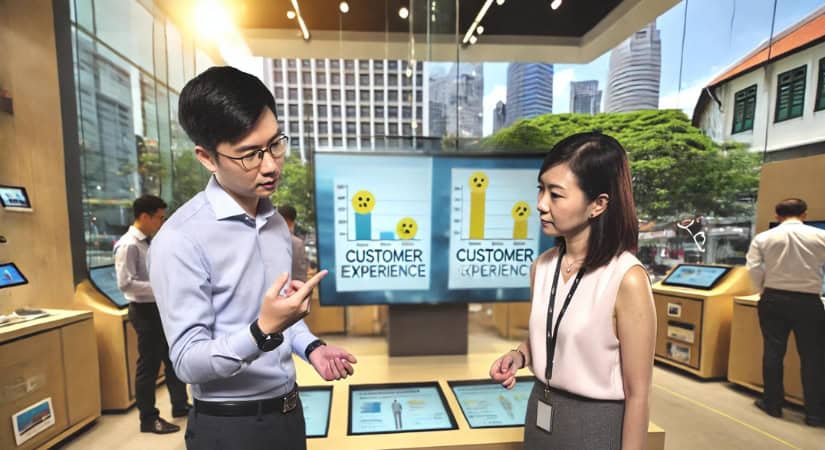The Role of Design Thinking in Transforming Customer Experiences

Understanding the Principles of Design Thinking
Design thinking is a methodology focused on solving problems through empathy, ideation, prototyping, and testing. The goal is to create user-centric solutions that address real needs. By following this innovative approach, we foster creativity and collaboration, which leads to more effective and sustainable outcomes.
The first step in design thinking is empathy. This involves understanding the users or customers deeply by observing their behaviour, engaging with them, and discovering their pain points and desires. Having a clear grasp of what users truly need allows us to design solutions that are both practical and highly valued. Creating detailed user personas can help us visualise and empathise with our target audience better.
Next, ideation is crucial. During this phase, team members brainstorm and generate a wide range of ideas without constraints. This encourages out-of-the-box thinking and allows for creative exploration. Prototyping follows, where these ideas are translated into tangible, but often preliminary, versions of products or services. These prototypes are then tested with real users to gain feedback and insights. Iterating on this feedback leads to refined solutions that are more likely to succeed in the real world.
Implementing Design Thinking in Business Processes
Incorporating design thinking into our business processes requires a cultural shift and commitment from our team. It involves embedding the principles of empathy, collaboration, and experimentation into everyday operations. For example, in human resources, we can use design thinking to create better employee experiences by deeply understanding their needs and designing tailored programmes that enhance job satisfaction and productivity.
In accounting and business advisory, design thinking can help us develop innovative approaches to financial management and strategic planning. By understanding the specific needs of our clients, we can offer customised solutions that address their unique challenges. This personalised approach fosters stronger client relationships and drives better results.
The implementation process typically involves cross-functional teams working together to identify problems, generate ideas, and develop solutions. Regular workshops and brainstorming sessions can foster a culture of continuous improvement and innovation. Using agile methodologies alongside design thinking can further enhance our ability to respond quickly to changing market demands and customer needs.
Applying design thinking across our various services—such as business set-up, taxation, and IT solutions—ensures that we provide comprehensive and user-centric solutions that drive business success. This holistic approach not only improves our internal processes but also enhances our ability to deliver exceptional value to our clients.
Enhancing Customer Experience Through Design Thinking
Design thinking places the customer at the centre of the development process, ensuring that their needs and preferences guide the creation of products and services. By deeply understanding what our customers want, we can deliver experiences that are not only satisfying but also exceed their expectations. One approach to achieving this is through the use of customer journey mapping.
Customer journey mapping is a visual representation of the customer’s experience with our service or product. This map helps us identify pain points and opportunities for improvement at each stage of the customer interaction. By addressing these pain points, we can create more seamless and enjoyable experiences. For example, in business setup services, understanding the challenges faced by new entrepreneurs allows us to provide smoother onboarding processes and more supportive consulting services.
Another important aspect is continuous feedback. Conducting regular surveys and gathering direct customer feedback helps us stay aligned with their evolving needs. By incorporating their feedback into our iterative design process, we ensure that the solutions we provide remain relevant and valuable. This not only improves customer satisfaction but also fosters long-term loyalty and trust.
Measuring the Impact of Design Thinking on Business Success
To understand the true value of design thinking, we must measure its impact on our business success. Quantifying the outcomes of our design thinking initiatives provides valuable insights into their effectiveness and areas for further improvement. One key metric to consider is customer satisfaction. By tracking metrics such as Net Promoter Score (NPS) and customer retention rates, we can gauge how well our design thinking efforts are resonating with our audience.
Furthermore, measuring the efficiency of our internal processes provides a clear picture of the operational benefits gained from design thinking. Metrics such as project cycle time, error rates, and employee productivity offer tangible evidence of how design thinking has streamlined our operations. For instance, in accounting and taxation services, the reduction in processing errors and faster turnaround times highlight the effectiveness of our innovative approaches.
Financial performance is another critical aspect to measure. Increased revenue, profitability, and market share are strong indicators that our design thinking strategies are driving business growth. Analysing these financial metrics helps us understand the broader impact of our efforts and make informed decisions for future initiatives. By continuously monitoring and evaluating these metrics, we can ensure that design thinking remains a core driver of our business success.
Conclusion
Adopting design thinking is a transformative approach that enhances our ability to solve problems creatively and deliver exceptional value to our customers. By focusing on empathy, collaboration, and continuous improvement, we can develop solutions that truly meet the needs of our clients and drive business success. From improving internal processes to enhancing customer experiences, design thinking offers a holistic framework for innovation and growth.
At 3E Accounting Pte Ltd – Singapore, we are committed to leveraging the principles of design thinking to support our clients in achieving their business goals. Whether you need help with company incorporation in Singapore, or perhaps, business advisory or IT solutions, our expert team is here to assist you every step of the way. Contact us today to discover how we can help you succeed.












